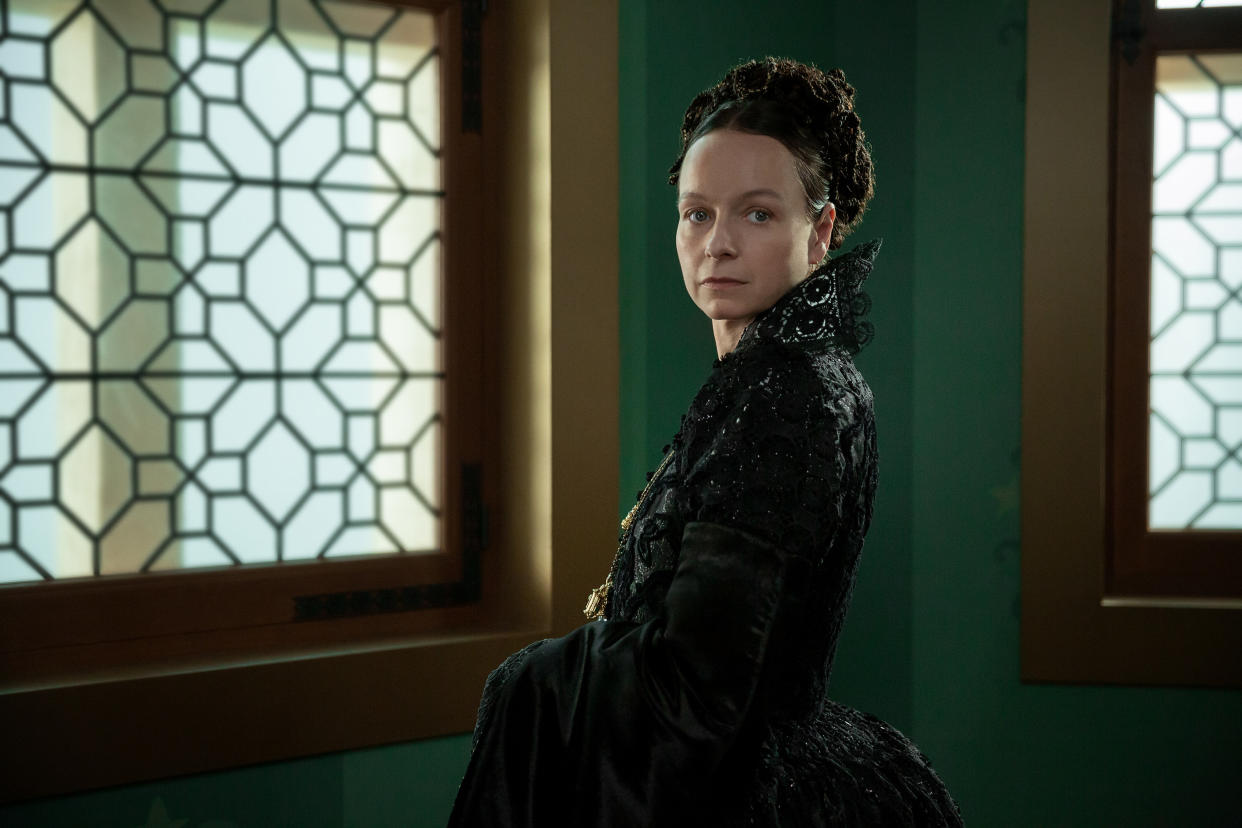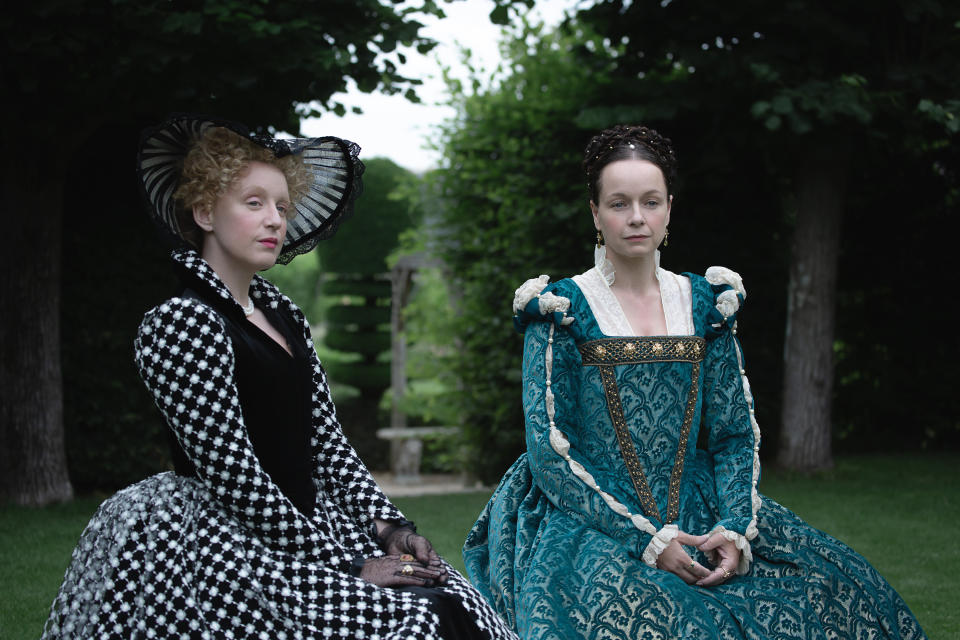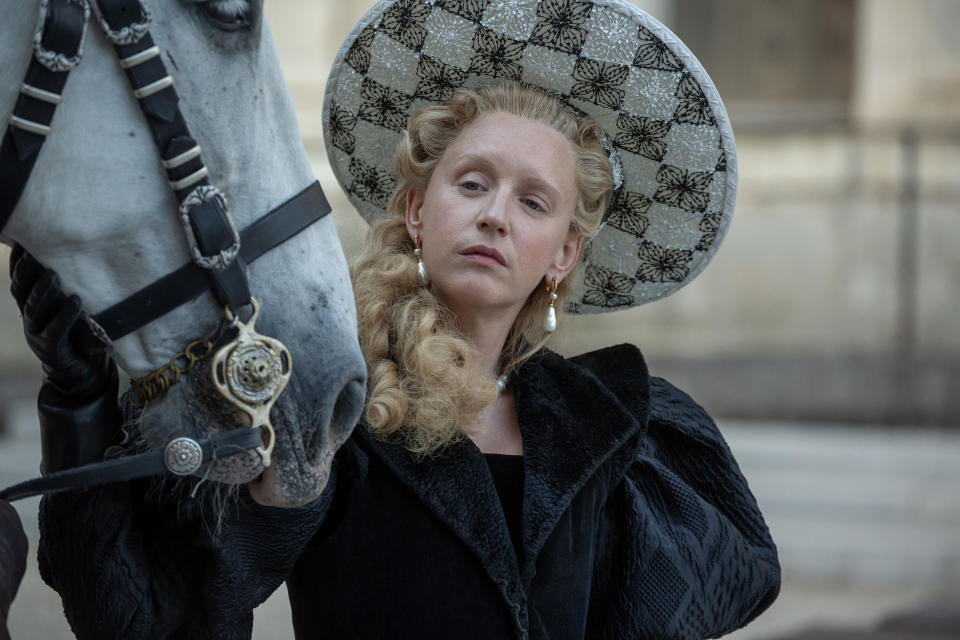What’s True and What’s Not on Starz’s ‘The Serpent Queen’

- Oops!Something went wrong.Please try again later.
Why did Starz turn away from the British Tudors and to the world of French Queen Catherine de Medici for their new series “The Serpent Queen”?
“Sometimes it’s because somebody’s so bad that they really make a dent in history,” Nancy Goldstone, author of “The Rival Queens,” a biography on de Medici, said. Goldstone talked to IndieWire via Zoom and explained that de Medici was not only a fierce strategist, but a brutal and bloody queen with a bevy of murders under her hat.
More from IndieWire
'Outlander' Prequel 'Blood of My Blood' Set at Starz: First Plot Details Revealed
'Becoming Elizabeth': Why Starz' Continued Obsession with the Tudors Is a Smart Call
“The Serpent Queen” attempts to showcase de Medici’s (Samantha Morton) ruthlessness, as well as highlight the humor in a story of an unappealing young Italian woman sent to France to become Queen. Filled with fourth-wall breaks, and a joke that feels pulled directly from Martin Scorsese’s “Goodfellas,” “The Serpent Queen” almost feels like the anti-historical drama. But sometimes fact and fiction collide — below, look at five elements “The Serpent Queen” returns to and how true (or not) they really are.
1. Was Catherine de Medici a commoner?
The pilot episode plays fast and loose with Catherine’s upbringing. Catherine de Medici was born to Lorenzo de Medici, the Duke of Urbino and his wife, Madeleine, the Countess of Boulogne. The episode shows that her father died of syphilis with her mother committing suicide shortly thereafter. In reality, Catherine’s mother died of a bacterial infection as the result of unsterile conditions in childbirth, and her father was said to have died of unknown reasons soon after. The young de Medici lived in relative comfort until she was eight years old, when the de Medici power faction was overthrown and Catherine was placed in a series of convents. Unlike the series, which presents Catherine as being trapped in a physically abusive convent before she’s liberated by her uncle Pope Clement VII (Charles Dance), it was this final location that Catherine claimed she lived the happiest days of her life, according to the biography “Women of Power: The Life and Times of Catherine de Medici.”
Considering Catherine’s parents, the series perpetuating that she was a lowly commoner isn’t accurate. “Hollywood probably doesn’t understand all the stratifications,” said Goldstone. Though Catherine de Medici wasn’t royal, she was an aristocrat. Because of that, she wasn’t on the same level as her husband but was still a worthy choice for the second son of the King of France to marry. “She was lower than him, but she wasn’t a peasant,” said Goldstone. In fact, much of the early episodes’ emphasis on Catherine’s extensive dowry was to further prove she was not a commoner.

Shanna Besson
2. Did Catherine de Medici truly love her husband?
Unlike other Starz historical series where the goal is to show the two leads hopping into bed together, “The Serpent Queen” situates the relationship between young Catherine (Liv Hill) and Henry (Alex Heath) as one-sided. Catherine admits she fell in love with Henry, but the future King is enamored with the older Diane de Poitiers (Ludivine Sagnier). This is all true. Henry was a nice guy for the time period, per Goldstone. He was kind, attractive, and not brutal or mean. He also did come to trust Catherine very heavily. “She [Catherine] eventually wormed her way into being a friend,” Goldstone said.
The biggest divergence from history with regards to the series’ central love triangle is Catherine’s relationship with Diane. The series presents it as two women in a power struggle. And while Goldstone said the two certainly weren’t friendly, each knew they needed the other to get ahead. Diane didn’t want Henry overthrown because of an illegitimate marriage, so she regularly forced him to do his “kingly duties” with Catherine — Catherine would bear 10 legitimate children for Henry. And Catherine understood Henry’s devotion to Diane so would feign being nice to her. In fact, it was this pseudo friendly relationship between the pair that made way for Catherine to become a power player in France.
“When Henri dies,” said Goldstone, “The Guises [a prominent French noble family] they’re going to come in and take over. They have a choice. They can go with Diane, who has done so much for their family, or they can go with a little mouse, Catherine, who isn’t going to seem to be any trouble at all. But Diane is domineering and assertive. So they get rid of Diane and they put Catherine in there, and that’s her first step in coming forward in power.”

Shanna Besson
3. Did Diane de Poitiers groom a young Henry II?
Henry and Catherine’s ages aren’t mentioned in “The Serpent Queen,” but the pair married in 1533 when both were just 14 years old. In Kathleen Wellman’s book “Queens and Mistresses of Renaissance France,” Henry and Diane de Poitiers became romantically involved the year after he married Catherine de Medici; Henry was 15 and Diane was 35. But Goldstone said it’s not an example of what in present day we would understand as grooming. Though the two met when Henry was just 7, he idealized her as a representation of the ideal woman as well as his mother who had died, rather than a lover. “Diane was such a big thing,” said Goldstone. “In his mind, he kind of confused her with his mother and, of course, she was really beautiful. It wasn’t grooming, it was more on his side looking for his dead mother.”
4. Did Catherine’s court include little people and people of color?
It’s unclear if the series takes liberties with Catherine’s court — including women of color like maid Rahima (Sennia Nanua) — but Catherine de Medici did routinely have little people in her court, as well as astrologers like Ruggieri (Enzo Cilenti). Goldstone noted Catherine de Medici was also a proponent of Nostradamus, the infamous astrologer who claimed to predict all manner of future events.
5. Was Catherine a witch?
While Catherine loved the mysticism of the time period, it’s impossible to know if the series is taking artistic liberties with Catherine believing she can see the future in her dreams. “She was very superstitious,” said Goldstone. “She was into the occult.” If anything, Goldstone said Catherine often claimed that she could make things happen with her thoughts. “Even just through repetition of talking she believed that if she got you in a room with her she could make you do what she wanted you to do, which of course didn’t work.” Catherine would routinely send letters to the ambassador of Britain, Sir Francis Walsingham, saying her son would marry Elizabeth I. Walsingham often laughed at these letters, Goldstone said, but Catherine really did believe if she kept writing about it it would manifest in reality.
“The Serpent Queen” airs Sundays on Starz.
Best of IndieWire
7 New Netflix Shows in September 2022 — and the Best Reasons to Watch
‘The Lord of the Rings’: Everything You Need to Know About Amazon’s Big Money Adaptation
Sign up for Indiewire's Newsletter. For the latest news, follow us on Facebook, Twitter, and Instagram.

